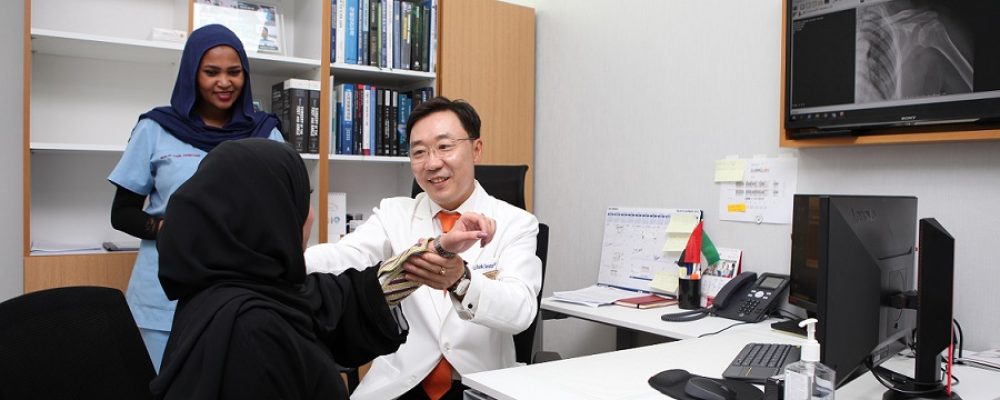As part of its commitment to bring innovative treatments to its patients, University Hospital Sharjah (UHS) has introduced the ‘HAKI Knife’ technique, a modern minimally invasive surgery which takes only five to 10 minutes to free a patient from trigger finger, a painful sensation which comes from the locking of the muscles of the finger when bending or straightening them. The experience is likened to pulling the trigger of a gun, hence the name.
The hand has 27 bones with finger joints placed between each bone repeatedly bent and straightened about 25,000 times throughout one’s lifetime and are even more these days due to excessive use of digital devices. Lack of care and proper rest may lead to trigger finger as repetitive pressure causes damage to the inner muscles and tendons.
Trigger finger happens when the muscle tendon which allows the fingers to bend is not passing through the pulley, a fibrous tunnel that prevents the tendon to protrude like a bow. However, due to swelling developed on the surface, the tendon could not glide through the fibrous tunnel, leading to painful sensations and immobility of the fingers, and becomes even more difficult as the disease progresses.
Through the ‘HAKI Knife’ technique, a modern treatment and very simple procedure which leaves no scar and very low chances of complications, patients will be able to bend their fingers and perform normal activities right after the procedure.
Dr. Seung Jun Park, consultant surgeon at the Himchan – UHS Joint and Spine Center, said: “Based on our analysis of 170 patients who had undergone the trigger finger surgery, the most commonly affected finger is the fourth one of the ring finger, followed by the middle one and the thumb. However, after undergoing the ‘hake knife’ technique, more than 95 per cent of patients were very satisfied of the procedure as they can immediately feel the smooth movements of their fingers without any pain or locking sensation. It is also very rare that recurrences happen or any side effect.”
Using a specially designed knife called HAKI, the finger’s pulley will be cut with a small needle attached to this bent instrument in a hooked needle shape. A local anesthesia will be applied while the procedure takes only five to 10 minutes. However, for severe conditions or recurrence, a one-centimeter incision will be done while the patient is under sedation. The surgery takes about 10 minutes to complete.
Dr. Ali Obaid Al Ali, UHS Chief Executive Officer and Member of the Board of Trustees, highlighted: “The latest innovative treatment at Himchan-UHS Joint and Spine Center is part of our continuous investment to upgrading the healthcare systems in Sharjah and the UAE in collaboration with Himchan Hospital. Patients can avail the highest standards of orthopedic subspecialties such as hand and foot surgery at UHS using the most modern and minimally invasive procedures, today’s leading trends in surgery which is safer and more cost-effective.”
Most of the common patients for trigger finger are housewives, chefs, drivers, and players of various sports such as golf and tennis as the most common, especially beginners. In some cases, children also can have the disease as it is hereditary rather than from external shocks. It is also usually occurring among women due to aging and hormonal changes.
For early stages, treatment given are usually cold compress and simple non-steroidal anti-inflammatory drugs, however steroidal injections are also given can be given 1-2 times if there is a difficulty in straightening the finger right after bending with clicking sensation and sound. If symptoms persist, a HAKI Knife treatment is then recommended.



